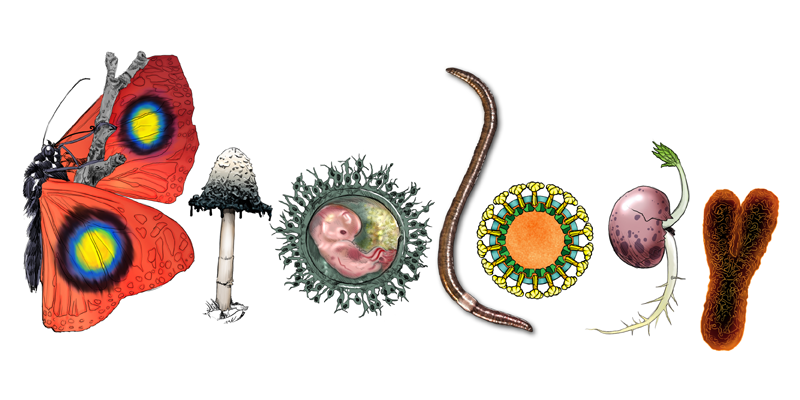Senses
Article curated by Ginny Smith
Our senses allow us to explore and interact with the world around us, and yet we don't fully understand how they work. Even the simplest living organisms have some way to sense their environment - and some animals can sense in ways we can't even imagine! The more we learn about our own and other creatures senses, the better chance we have of helping those who have problems with their senses.

Vision
Vision is probably the primary sense for humans. For our entire waking lives, we are bombarded with visual information from our surroundings. Light enters our eyes where is activates receptor cells on our retinas which send messages to our brain. But this is where it gets a lot more complicated and less well understood. Our brains have to break down and process all the information coming in, to make sure it is useful in helping us navigate the world. This is a huge challenge, and we don't yet know exactly how we do this. As we learn more about how our brains understand visual information, this may lead to improvements in computer vision, as well as help for people with vision problems.
Learn more about Vision.


 2
2Hearing

Learn more about hearing.


 2
2
Smell
From the heady scent of a rose garden on a summer's day to the rumble in our stomachs that can be triggered by wafts of freshly baked bread as we walk past a bakery, smell plays a huge role in our lives. And yet it is probably the most mysterious of our senses. Scientists don't know exactly how we detect different smells, how many of them we can identify, or why they have such a profound effect on our emotions.
Learn more about Smell.


 2
2Taste
Our sense of taste is hugely complicated, and there are still many things we don't know about it - from the sensors on our tongues which convert chemicals into signals to be sent to the brain to how the brain unscrambles the information coming in.


 2
2Touch
Our sense of touch allow us to explore the world around us, but there are still things about it that we don't know.


Pain

Learn more about Pain.


 2
2
Senses and Emotion
It seems very intuitive that when we see something that angers us, we feel the emotion of anger and this triggers bodily responses - clenched muscles, a reddening face and the desire to move. And yet one of the most prominent theories of emotion turns this on its head. The James-Lange theory, put forward in the late 1800s, suggests that the bodily symptoms come first, and it is our brain's interpretation of these symptoms that gives us the emotion. While it may be little over-simplified, modern evidence supports some elements of the theory. If you ask people to nod their head while listening to a speech, they are more likely to agree with it than if they were shaking their head instead. And faking a smile really can make you find things funnier or more enjoyable. But, bodily symptoms aren't everything. For one, the same symptom can be indicative of more than one emotion or bodily state - you might shake out of fear, anger or cold, for example. Another theory is that the thalamus triggers both the bodily reactions and the experience of the emotion simultaneously.
More recently, the Schacter-Singer theory has built on these ideas, suggesting that we cognitively assess both the bodily symptoms and the environment we are in to decide what emotion we are experiencing. Experimental support for this theory comes from the fact that when injected with adrenaline, but not told what it was, participants misinterpreted the symptoms as being caused by emotion. What emotion they attributed it to depended on how the other people in the room were acting. If warned about the side effects of the injection, however, the same result was not seen.
Learn more about How emotions work.

 2
2Mixing the senses

Synesthetes experience the world differently to most people - their senses cross in interesting ways. Some of them see letters in different colours - always the same colour for each number, although these can vary between synesthetes. Others might taste coffee when hearing a C-sharp, or see numbers laid out in space in front of them in a particular pattern.
It is thought that this is due to differences in the brains of synesthetes, which mean that there are extra connections between the parts of the brains responsible for the concepts and/or perceptions involved in their version synaesthesia. There are theories as to how these unusual connections come about, but no one knows for sure. The fact that it runs in families suggests a genetic component, but the genes involved are yet to be found. The fact that pairs of identical twins can be found where one sibling has synaesthesia and the other doesn’t shows that genetics alone can’t explain this fascinating phenomenon.
Interestingly, even people without synaesthesia agree with some common associations. For example people associate high pitched sounds with sweet and sour tastes, while lower pitch sounds are associated with bitter or umami (savoury) tastes. Another example is between words & shapes - when given to images - a rounded 'splat' shape and a spiky 'starburst' shape and asked to decide which shape is called Bouba and which is called Kiki, most people pick Kiki for the spiky shape because of its spiky sound, while the softer Bouba fits the rounded shape more closely.

Animal senses
Many animals have sensory abilities we can only dream of - from detecting the heat of their prey to using echolocation to 'see' in the dark. It is vital we understand their ways of navigating the world so we can avoid damaging animal populations through development. Better understanding may even lead to new ways for us to see the world, or to help those who have lost one of their senses.


This article was written by the Things We Don’t Know editorial team, with contributions from Ginny Smith, and Rowena Fletcher-Wood.
This article was first published on 2017-02-16 and was last updated on 2018-01-27.
Blog posts about senses


Recent senses News
Get customised news updates on your homepage by subscribing to articles













